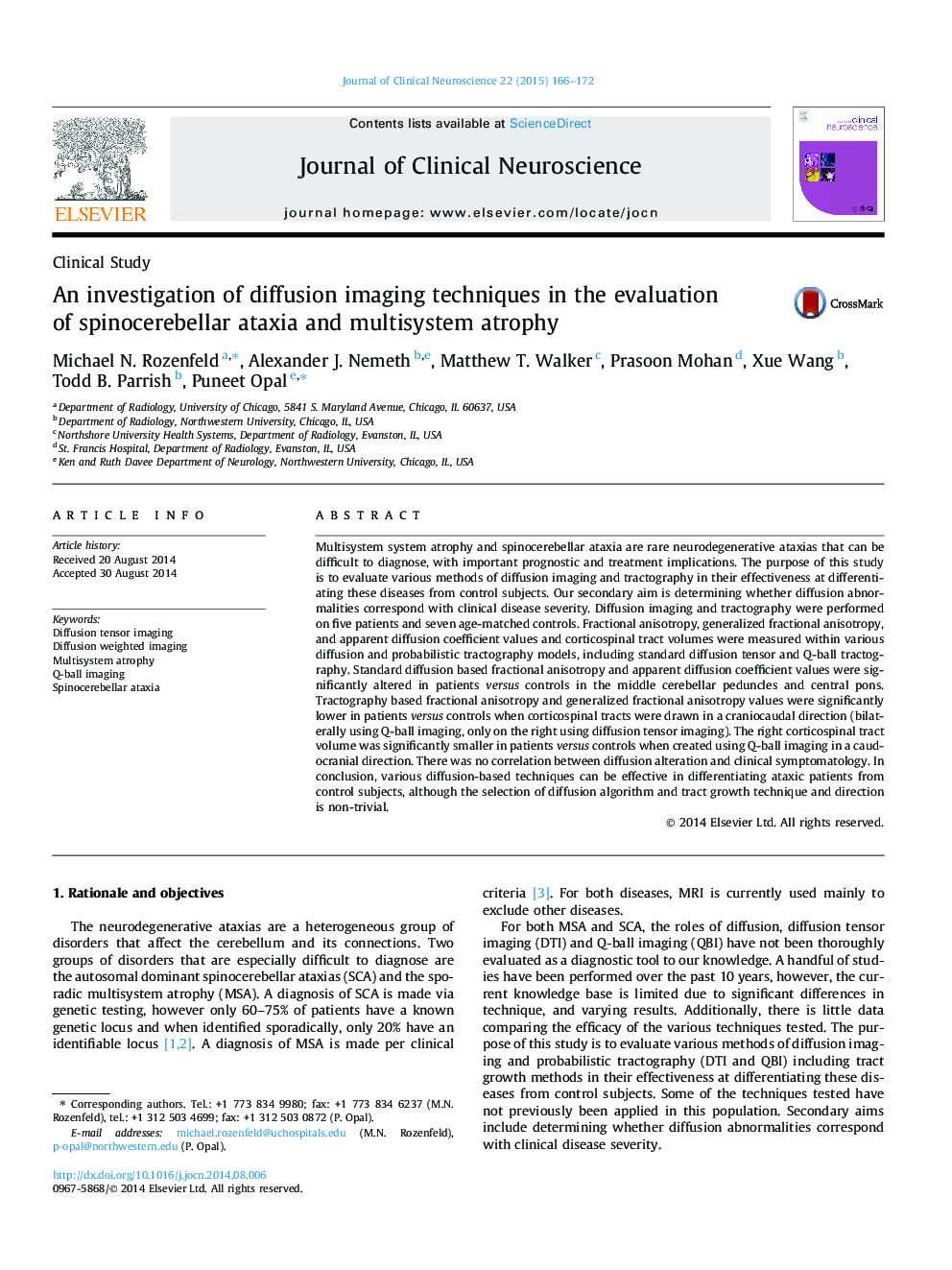| Article ID | Journal | Published Year | Pages | File Type |
|---|---|---|---|---|
| 3058983 | Journal of Clinical Neuroscience | 2015 | 7 Pages |
Multisystem system atrophy and spinocerebellar ataxia are rare neurodegenerative ataxias that can be difficult to diagnose, with important prognostic and treatment implications. The purpose of this study is to evaluate various methods of diffusion imaging and tractography in their effectiveness at differentiating these diseases from control subjects. Our secondary aim is determining whether diffusion abnormalities correspond with clinical disease severity. Diffusion imaging and tractography were performed on five patients and seven age-matched controls. Fractional anisotropy, generalized fractional anisotropy, and apparent diffusion coefficient values and corticospinal tract volumes were measured within various diffusion and probabilistic tractography models, including standard diffusion tensor and Q-ball tractography. Standard diffusion based fractional anisotropy and apparent diffusion coefficient values were significantly altered in patients versus controls in the middle cerebellar peduncles and central pons. Tractography based fractional anisotropy and generalized fractional anisotropy values were significantly lower in patients versus controls when corticospinal tracts were drawn in a craniocaudal direction (bilaterally using Q-ball imaging, only on the right using diffusion tensor imaging). The right corticospinal tract volume was significantly smaller in patients versus controls when created using Q-ball imaging in a caudocranial direction. There was no correlation between diffusion alteration and clinical symptomatology. In conclusion, various diffusion-based techniques can be effective in differentiating ataxic patients from control subjects, although the selection of diffusion algorithm and tract growth technique and direction is non-trivial.
